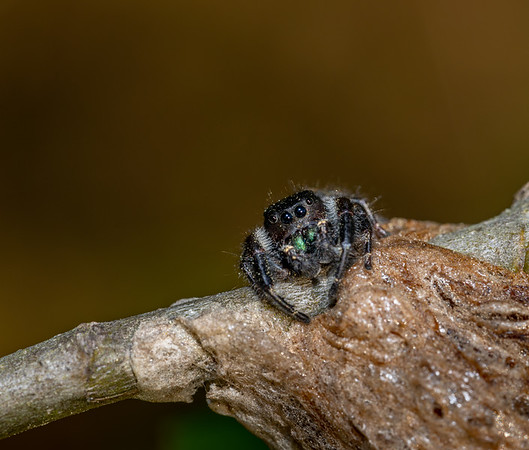By Laura Warman, Grants Manager

Spooky season might be past us, and we’ve even had the first freeze of the year, but as the growing season winds down late summer and fall are great times to spot spiders and their webs.
Spiders, overall, are a fascinating group of creatures that have been around for about 400 million years. In other words, they were probably eating cockroaches and silverfish for 150 million years before the dinosaurs even appeared! Spiders have been around for so long that even the most modern groups (like orb weavers) can be found throughout the world.
Over 40,000 species of spiders exist today, and they have adapted to live almost everywhere on Earth, except for the polar regions, the highest mountains, and the oceans. Despite the reactions they get from most people, the great majority of spiders are entirely harmless to humans, and they carry out an important function by keeping insect numbers down. Recently, researchers made an amazing discovery and found that there even exists a species of (mostly) herbivorous jumping spiders in the forests of Latin America! Ironically, these (admittedly very cute) jumping spiders were dubbed Bagheera kiplingi, in honor of the panther in Rudyard Kipling’s Jungle Book.
Back in North Carolina, as the foliage changes colors, spider webs become more visible – and especially pretty if covered in dew. Spiders are also easier to find during this time of year because they have had time to grow larger, build webs, may be guarding an egg sack, or looking for a warm spot to hide (although many spiders only live a year, others have been known to reach 20 years of age!). Keep in mind that not all spiders spin webs, and there are many different types of webs – the type of web can often give you an idea of what kind of spider spun it.
Black and Yellow or Zipper spiders (Argiope aurantia) are a common denizen of gardens and field edges from Canada all the way to Central America, and their webs are easy to identify because of the zig-zagging patterns towards the center of the web. This dense zig-zag pattern is called a “stabilimentum,” and, although the designs vary between species, all Argiope spiders around the world include them in their webs. No one is entirely sure what the stabilimentum does, though it was originally thought to stabilize the webs (hence the name). It is currently thought that it may protect the web from birds, attract insects, serve as communication between spiders, or help camouflage the spider from predators. In Australia, people claim that the density of the X-shaped pattern of the local Argiope webs predicts the strength of a storm or cyclone (although there’s no proof of this).
Spiny (or spinybacked) orbweavers are another globally common group of spiders. If you’ve ever been the first one on a trail – or the tallest one in your hiking group- chances are you’ve encountered these spiky little spiders and briefly worn their webs across your face. Spiny orbweavers are harmless, but notoriously spiky. It’s though that these spikes deter predators from eating the spiders – a very artful defense! One of the most widespread genera is called “Gasteracantha,” which literally means “spiny stomach.”
Likely the most infamous local web-weavers are black widows (Latrodectus spp.). Not only are they venomous, but they often live in and around human housing, and they have gotten a lot of bad publicity. Fortunately not everyone will react to their venom and despite their fearsome reputation, these spiders are very reluctant to bite and waste venom on humans.
In contrast to spiders that spin webs and “sit-and-wait” for their prey to come to them, other spiders rely on more well-recognized predator traits, such as good vision, camouflage, and speed. Green Lynx spiders are a great example, and if you are familiar with Debbie Roos’ photo diary from her pollinator garden in Pittsboro, you’ll be familiar with Lynx spiders and how charismatic they can be! They are good sized spiders, ranging from half up to an inch long, and usually bright green with black spikes and rust colored spots. Lynx spiders are important predators of common crop pests, and the females fiercely guard their egg sacs and newly hatched spiderlings until their first molt.
While it’s easy to be startled by spiders, they have much more reason to be worried about us than we do about them. So next time you run into one of them, just remember that these crafty little arachnids have been keeping down cockroach numbers for millions of years and tell them thanks!
